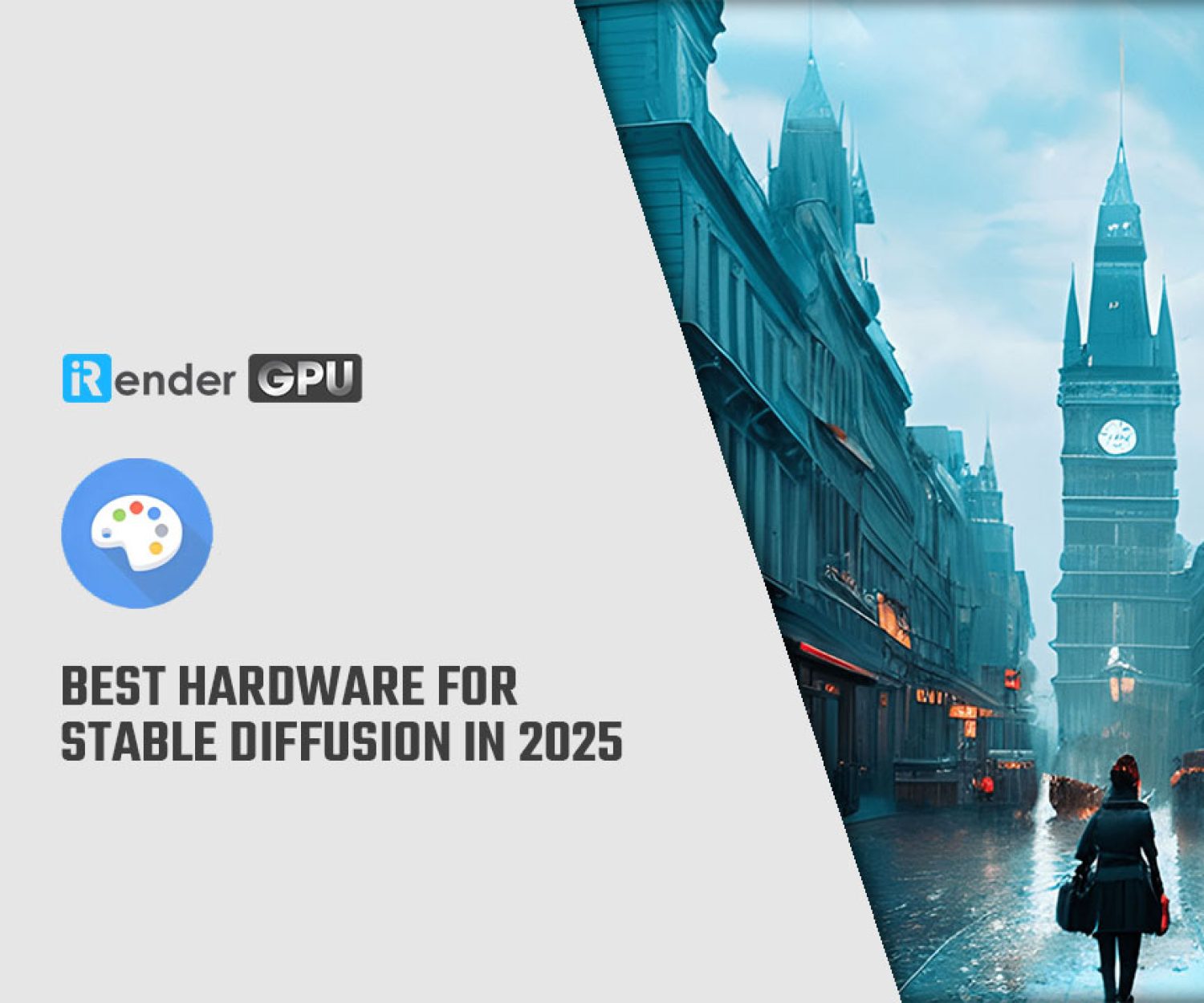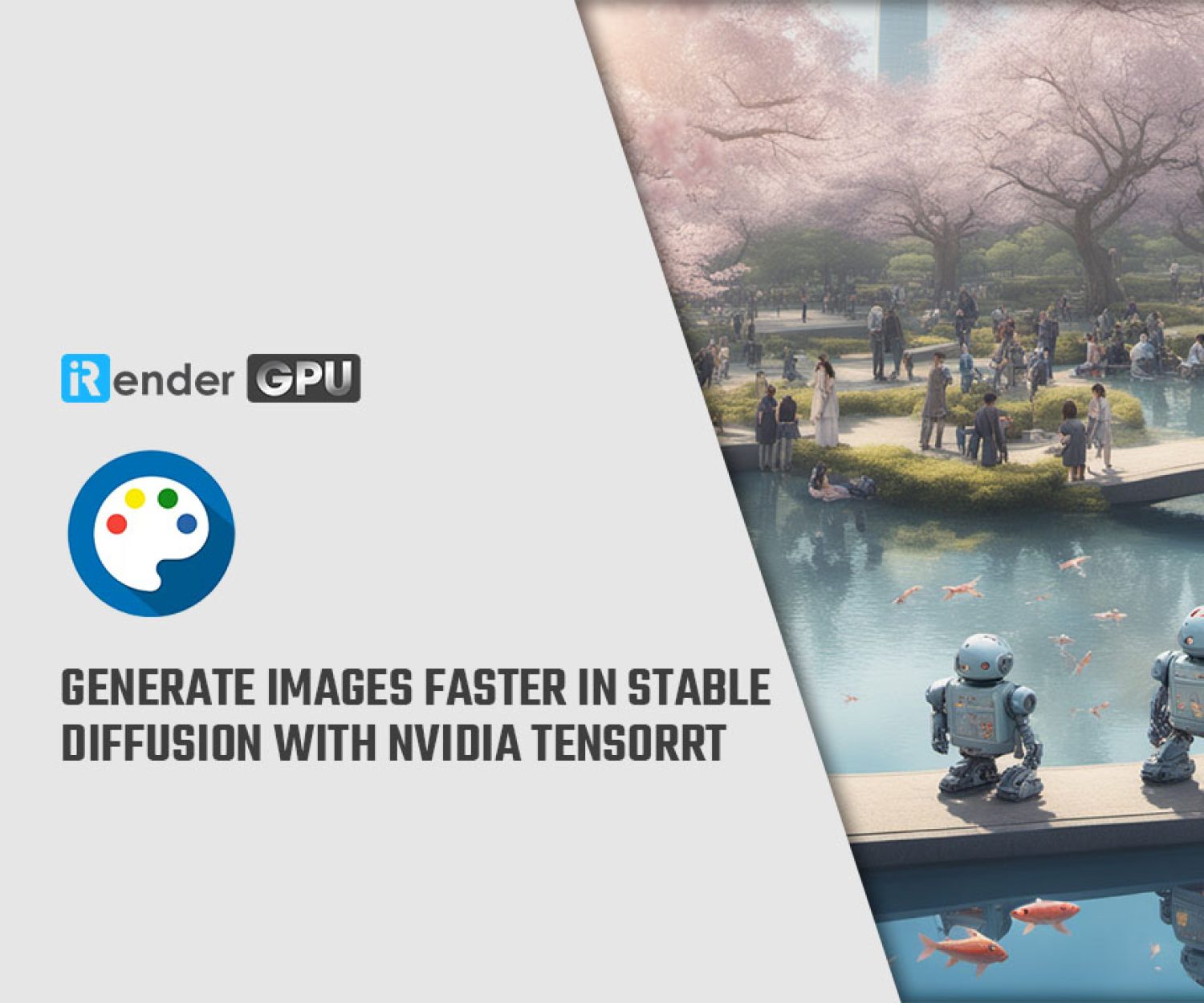Best Hardware for Stable Diffusion in 2025
In 2025, using AI to create images and videos is more and more popular, and Stable Diffusion is the ideal choice for many 3D artists worldwide. But to run this software smoothly on your PC, your system needs to meet Stable Diffusion’s requirements. This article aims to provide a comprehensive understanding of the system requirements and recommend the best hardware for Stable Diffusion in 2025.
Understanding these requirements is crucial whether you are optimizing an existing system or setting up a new one. Properly implementing these requirements will help you avoid common technical errors and ensure that your setup performs at its best.
So, what does the ideal setup look like this year? Let’s break it down.
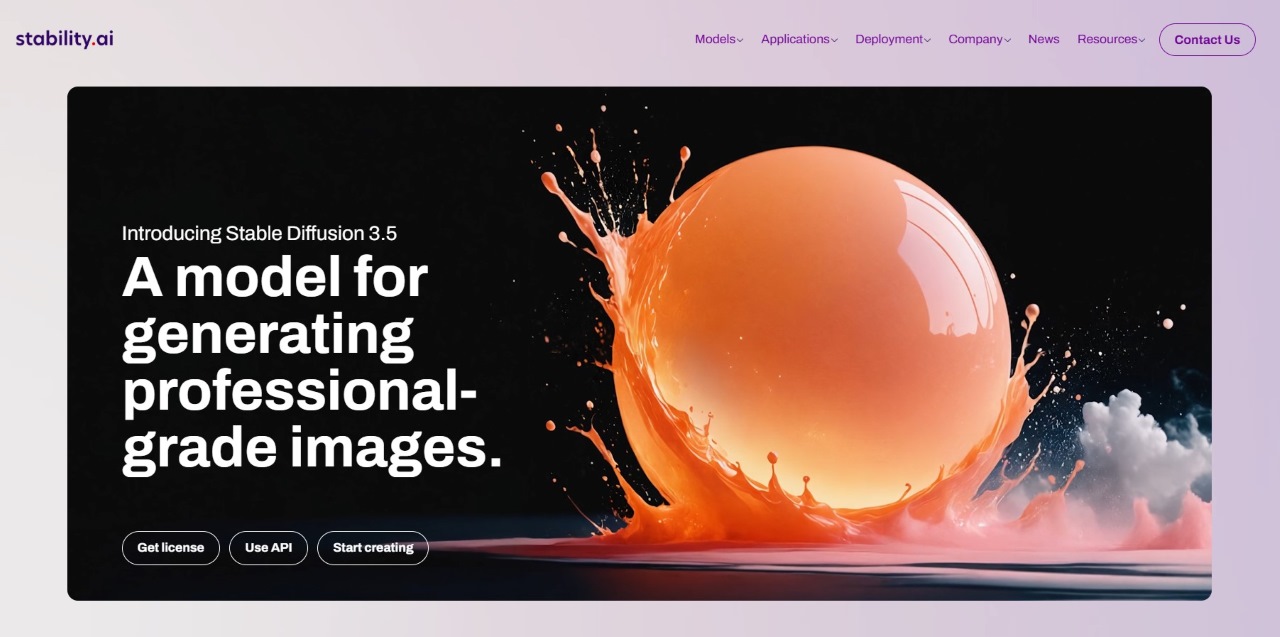
What is Stable Diffusion?
Stable Diffusion is a text-to-image deep learning model developed by Stability AI. In collaboration with CompVis and LAION, the model generates high-quality images from text prompts through a process called latent diffusion. Stable Diffusion is used in many professional creative purposes, from concept art to marketing imagery, because of its ability to generate unique images based on natural language prompts.
In addition, the model’s flexibility and open nature have made it a cornerstone in many creative workflows. It is especially popular with those experimenting with AI-generated content.
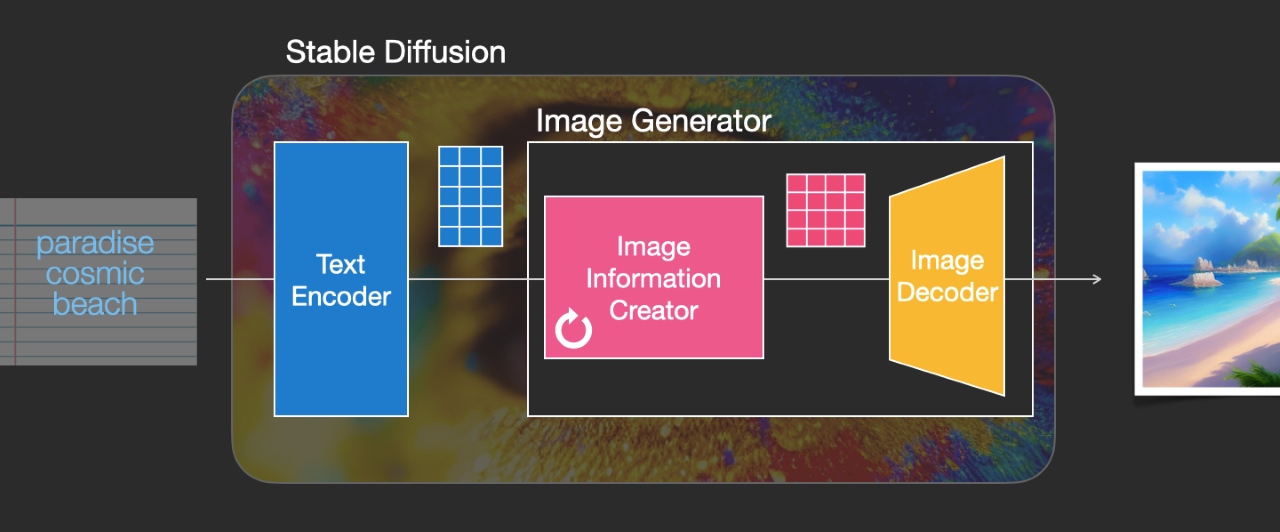
Source: jalammar.github.io
The Role of Stable Diffusion in Generative AI
Unlike many proprietary models, Stable Diffusion is completely open source. Like Blender, this means that developers and 3D artists can customize the model and create their own versions, with new applications. Until now, this model has played a central role in democratizing access to generative AI tools and encouraging experimentation and innovation across various industries.
Do We Need a GPU to Use Stable Diffusion?
The answer is yes.
It is arguably one of the most appealing aspects of Stable Diffusion. But its practical use largely depends on the availability of powerful computing resources. Creating images using Stable Diffusion is computationally intensive. It involves complex calculations and data processing tasks that can overwhelm standard computer systems.
Stable Diffusion works with large data sets, performs complex calculations, and manages network tasks at the same time. This computational demand goes beyond what a CPU can handle. This is where a GPU designed specifically to handle parallel tasks more efficiently comes into play. In addition, GPU memory and memory bandwidth are also important factors. High memory bandwidth allows for faster data transfer within the system. It combines with the abundant GPU memory that helps to handle larger models and set maximum batch sizes without compromising performance. On the other hand, Tensor cores, a feature of modern GPUs, allow for accelerating the matrix operations of machine learning algorithms while saving energy.
In short, GPUs provide the computational power and efficiency needed for Stable Diffusion models to operate stably and reach their full potential. This allows them to generate fast, high-quality images that are transforming AI-driven creative workflows.
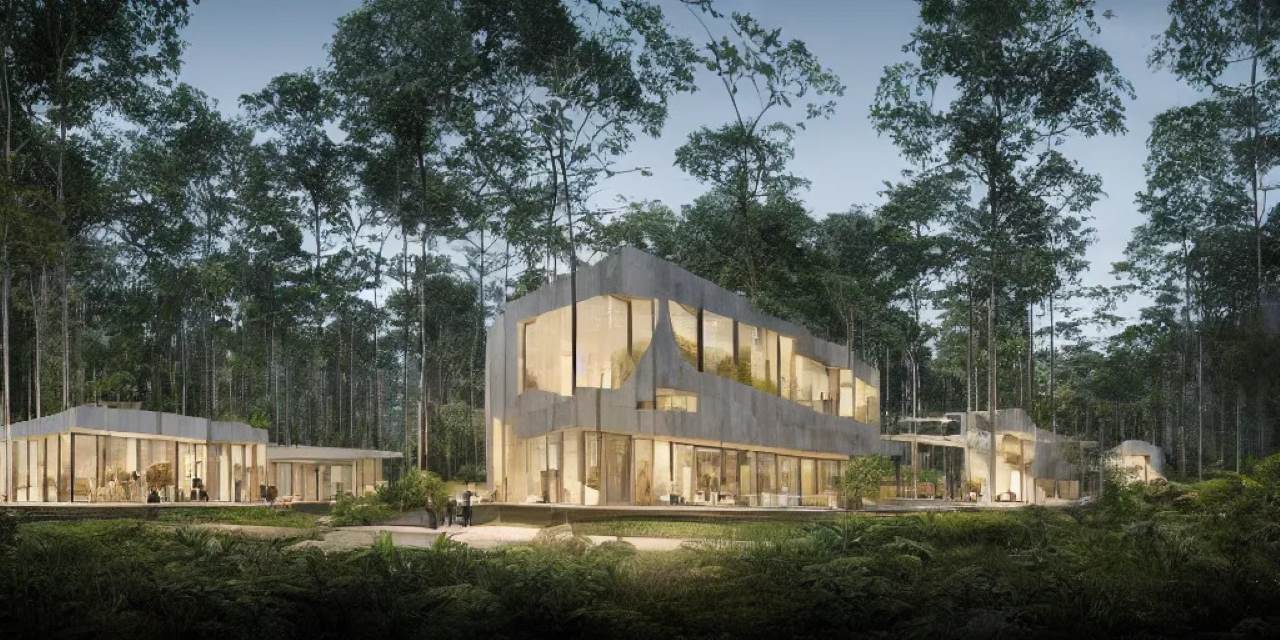
Source: openart.ai
Stable Diffusion Hardware Requirements
Stable Diffusion requires certain hardware specifications to function properly. Check out the minimum and recommended system requirements below.
Minimum Hardware Requirements
-
- OS: Windows 10/11, macOS, and Linux
- Graphics Card: At least 4GB VRAM
- Storage: 12GB or more of installed space, preferably an SSD for faster performance.
- RAM: At least 16GB
Running Stable Diffusion on lower-spec systems may result in slow performance and potential crashes. Also, using outdated or incompatible hardware will result in longer image processing times and other issues. Therefore, meeting these minimum requirements is important to experience basic functionality.
Recommended Hardware Requirements
For the best experience, upgrading to more advanced hardware will significantly improve performance. Here are the recommended specifications:
- OS: Windows 10/11, macoS and Linux
- Graphics Card: NVIDIA RTX series GPU is best due to native support, with at least 6GB VRAM or more.
- Storage: 12GB or more installed space, ideally on an SSD.
- RAM: 32GB for multitasking and creating more images.
Of course, following these recommendations ensures smoother and faster processing while minimizing operational issues. With a powerful GPU, high RAM, and good SSD storage, efficiency increases, the software responds faster, and handles complex tasks more efficiently.
Best Hardware for Stable Diffusion in 2025
Obviously, a powerful computer is not necessary to run Stable Diffusion locally. Although it won’t be as fast as a powerful system, a mid-range GPU will work well for creating AI art. Nevertheless, Stable Diffusion can be operated on low-end hardware.
Let’s break down the best hardware for Stable Diffusion in 2025 for optimal performance.
Processor (CPU)
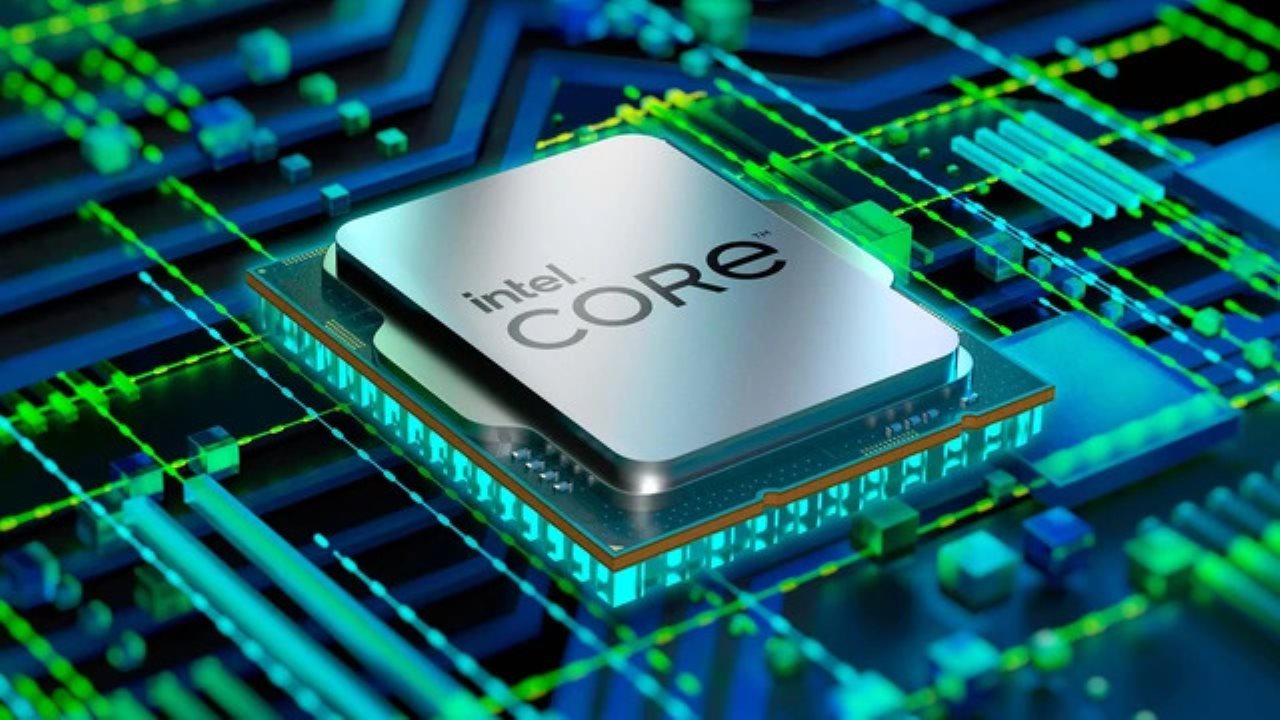
Source: Intel
In general, the CPU doesn’t play a big role in running Generative models unless the CPU is used in place of a GPU (which is not recommended). But if your workflow involves more data collection, manipulation, or processing, the CPU can have a bigger impact.
Based on testing generative AI models on a variety of modern CPUs, including the Intel Core 14600K, 14700K, and 14900K, along with the Xeon W-3495X, as well as AMD’s Ryzen 7 7700X and Threadripper PRO 7985WX, the choice of processor doesn’t affect the speed of image generation. But if you want to run multiple models at once, a CPU with more PCI-Express lanes like a Threadripper or Xeon, will better handle the number of graphics cards needed.
You might wonder if more CPU cores will make AI generation faster? The answer is no, since most AI applications are done on GPUs, not CPUs. Also, the CPU brand doesn’t matter too much; Intel or AMD will do just fine. At the end of the day, a mid-range four-core, eight-thread CPU will suffice for satisfactory performance.
Graphics Card (GPU)
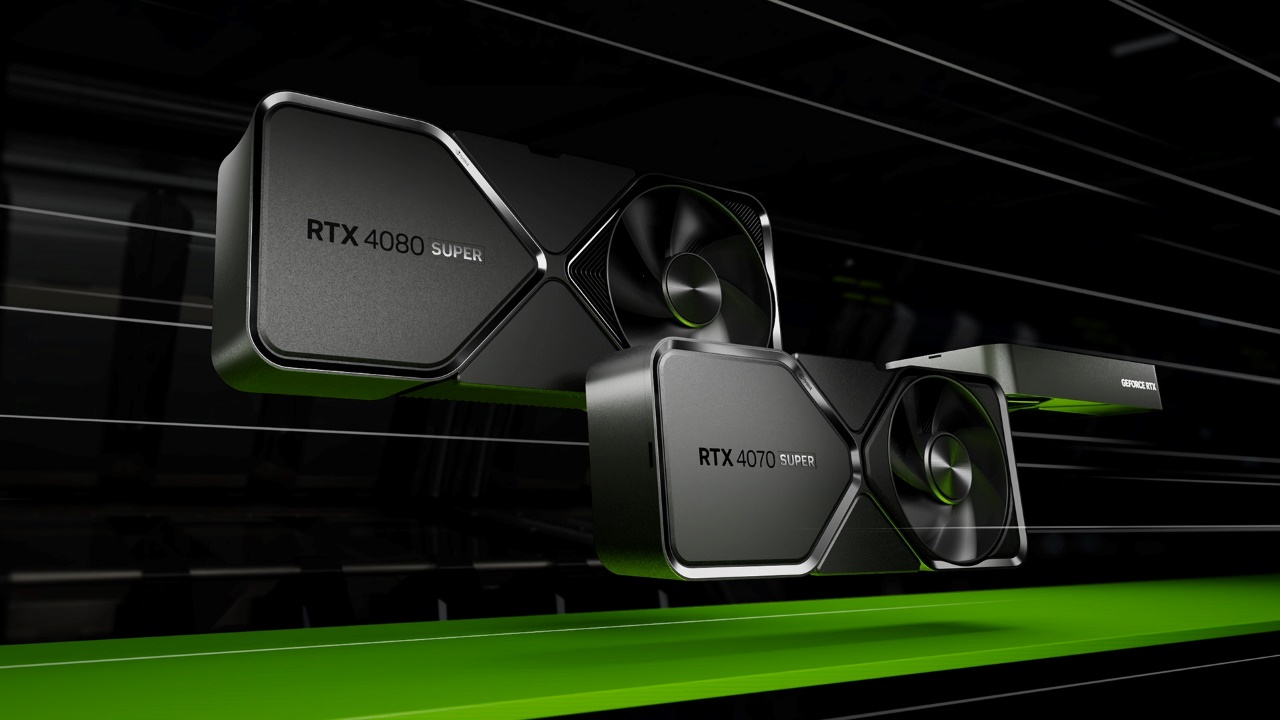
Source: NVIDIA
GPUs are at the core of most generative AI workloads, regardless of the output type, be it images, video, speech, or text. Most projects are based on CUDA (NVIDIA), but many also support ROCm (AMD). When choosing a GPU for generative AI, you need to consider the total VRAM and memory bandwidth.
For VRAM, the amount needed depends on the model you are using. Refer to the VRAM table based on the model below:
| Model Version | Minimum VRAM | Recommended VRAM | Training VRAM |
| SD1.5 | 8GB | 12GB | 16GB |
| SDXL | 12GB | 16GB | 24GB |
Source: proxpc.com
Next, you may also wonder if more GPUs improve generative AI performance? Unfortunately, no. That is, for example, 4 GPUs will help you generate 4 images in the time it takes one GPU to generate one image. Not that 4 GPUs will generate images 4 times faster than one GPU. What about NVLink? You don’t need NVLink if you want to use multiple GPUs for generative AI, as very few modern NVIDIA graphics cards support NVLink.
NVIDIA’s GeForce RTX 4080 Super with 16GB of RAM and the RTX 4090 with 24GB are now our top picks. Upgrading to the RTX 5000 Ada with 32GB or RTX 6000 Ada with 48GB is a fantastic choice if your project requires more memory, but it will cost extra. See the best GPUs for Stable Diffusion in 2025 table below. Note that the newest or fastest card is not always the best choice for every task.
| Memory | Tensor Cores | Ray Tracing Cores | TDP | MSRP | |
| RTX 5090 | 32 GB GDDR7 | 680 | 170 | 575W | $1,999 |
| RTX 5060 | 8 GB GDDR7 | ~ 144 (exp.) | ~ 36 (exp.) | 170W | TPD $300/$400 |
| GeForce RTX 4090 | 24 GB GDDR6X – 384 bit | 512 | 128 | 450W | $1599 |
| GeForce RTX 4080 Super | 16 GB GDDR6X | 836 | 121 | 450W | $999 |
| GeForce RTX 4060 Ti | 8/16 GB GDDR6 – 128 bit | 136 | 34 | 160W | $399/$499 |
| RTX A4000 | 16 GB GDDR6 – 256 bit | 192 | 48 | 140W | $1000 |
| GeForce RTX 3090 | 24 GB GDDR6X – 384 bit | 328 | 82 | 350W | $1499 |
| GeForce RTX 3060 | 12 GB GDDR6 – 192 bit | 112 | 28 | 170W | $329 |
As you can see in the Stable Diffusion benchmark from Tom’s Hardware, the RTX 4090 and 4080 deliver the highest performance.

Source: tomshardware.com
RAM
While system memory doesn’t have a significant impact on performance in this case, we generally recommend that your system’s VRAM be at least double that. Take into account the needs of any additional applications you want to use the system for.
Specifically, 16GB of RAM is the minimum RAM requirement for Stable Diffusion. However, 32GB will significantly improve stability and performance. But 64GB or more is recommended for best performance, particularly when managing big datasets or executing complex algorithms.
Storage
About 12GB of free storage is required to set up Stable Diffusion, although this may vary depending on the version you install. For example, if you install a third-party tool that requires additional storage, your maximum storage needs may be around 25 GB.
The storage required for the AI artwork generated by Stable Diffusion is largely determined by the size, resolution, and number of images you create. You should have at least 1-2TB of free storage if you plan to create a lot of AI artwork. You will end up using more storage if you have more high-resolution, high-quality images.
Conclusion
Finding the best hardware for Stable Diffusion in 2025 depends on your use case, budget, and plans. For most users, investing in a solid GPU like RTX 4080 and RTX 4090 as we recommended, a modern CPU, and enough RAM will go a long way.
If you’re not ready to upgrade your entire hardware, cloud platforms like iRender give you access to top-of-the-line GPUs at no upfront cost, a great way to experiment, iterate, or run large jobs on demand.
Boost Up Stable Diffusion Rendering with iRender
iRender is the perfect cloud rendering service that supports all 3D software, including Stable Diffusion and any plugin needed. We ensure you have a smooth workflow that is unmatched by any other render farm.
We provide high-configuration servers that increase CPU and GPU rendering speeds. We offer the most powerful RTX 4090 configuration packages on the market, all equipped with AMD RyzenTM ThreadripperTM PRO 3955WX @ 3.9 – 4.2GHz and AMD Ryzen™ Threadripper™ PRO 5975WX @ 3.6 – 4.5GHz processors, 256GB RAM and 2T NVMe SSD hard drive capacity. With a wide range of GPU servers (1/2/4/6/8x) – RTX 4090, you can choose the server that suits your needs to start the rendering process.

With Stable Diffusion preinstalled, you just need to connect to the remote server and work easily like you do on your local PC. Setting up ONCE and your working environment will be saved and ready to use at any time.
Why choose iRender?
Unlike other services, iRender lets you upload and download files without starting the server, saving you both time and money.
We offer a Desktop app for Windows with a full feature set and a simple Drive app for macOS for easy file transfers. Here’s why iRender is a top choice for your rendering needs:
- Full Control: Our service will give you full control over the servers you rent. Therefore, you are free to create your own working environment.
- Go Green: We are committed to using 100% solar renewable energy towards environmental sustainability.
- Real-human 24/7 Support: Our professional support agents and technicians guarantee to bring you the best rendering experience.
If you still wonder if this is the right place for your project, REGISTER NOW to get a trial and receive a 100% bonus promotion for your first transaction within 24 hours of registration with us.
This June, let’s celebrate our 6th anniversary with the biggest offer ever!
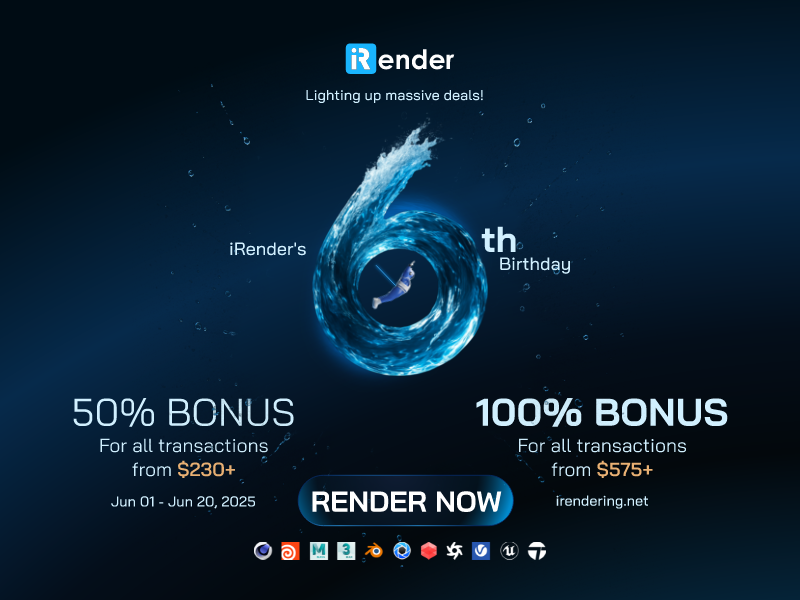
For more detailed information, please contact us via Live chat 24/7 or WhatsApp: +(+84) 912-785-500 or Email: [email protected]
iRender – Happy Rendering!
References: tomshardware.com, proxpc.com
Related Posts
The latest creative news from Cloud Computing for AI,


